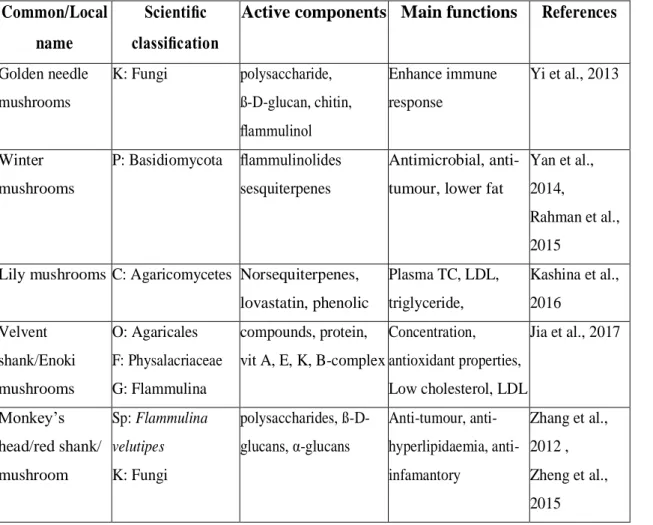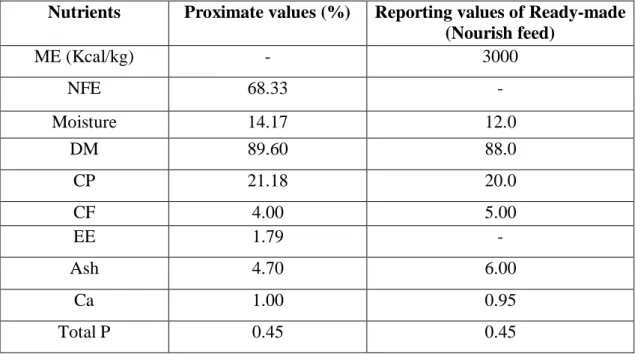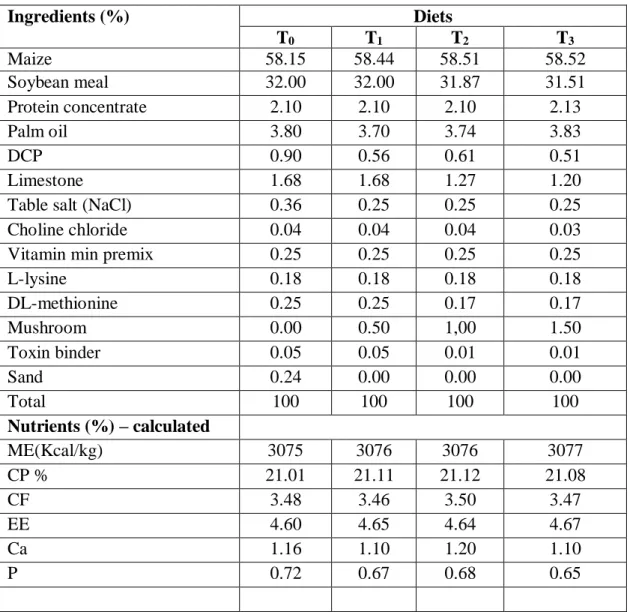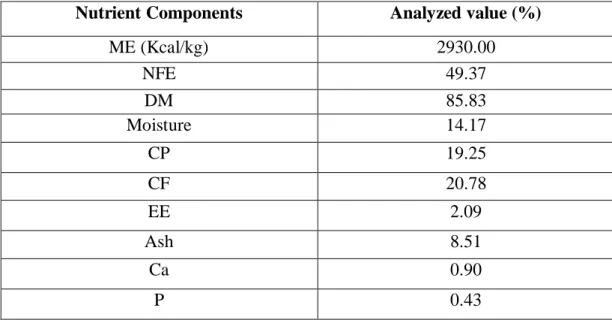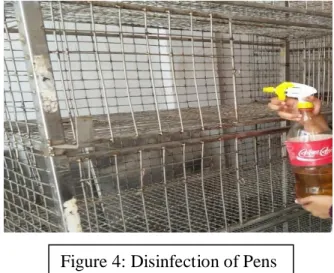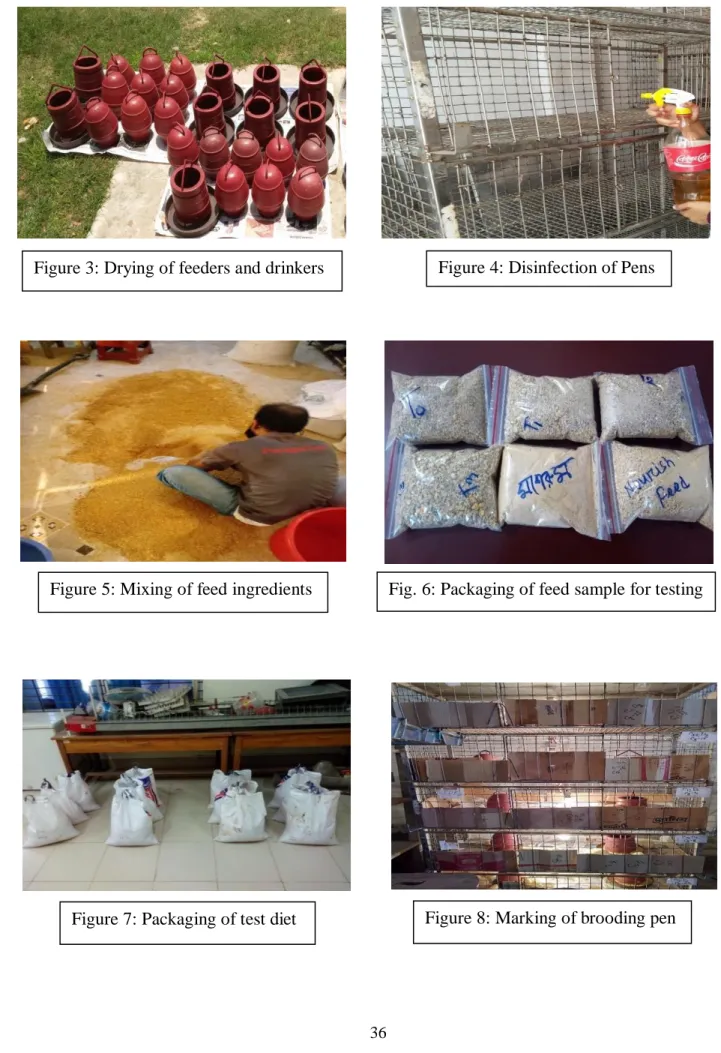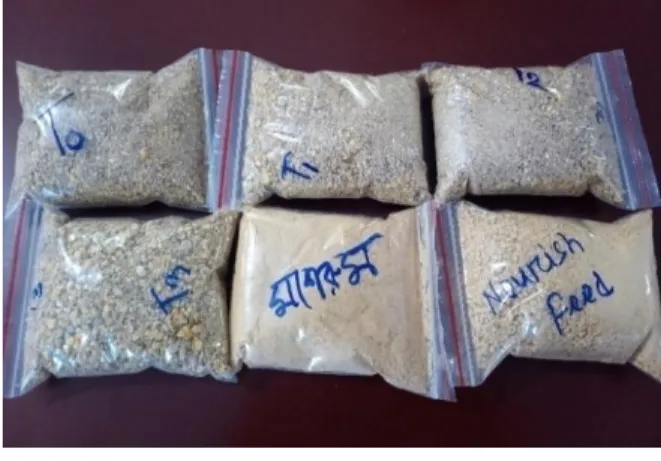According to recent reports, Chinese plant and mushroom extracts can be used in broilers as an alternative to antibiotic growth promoters (Guo et al., 2004). Mushrooms have long been valued as an important source of bioactive compounds with medicinal value (Tang et al., 2016). Additionally, mushrooms have been reported to have immune-enhancing and stress-reducing properties (Dalloul et al., 2006; Borchers et al., 2008).
Oyster mushroom (Pleurotus ostreatus) is a type of farmed mushroom that has antiviral and anticancer effects (Fard et al., 2014). Due to the abundance of compounds with antioxidant, antibacterial, immune-enhancing and stress-reducing properties on livestock, mushrooms have health-promoting properties (Dalloul et al., 2006). Mushrooms have long been recognized as a valuable source of bioactive chemicals with therapeutic properties (Mazaheri et al., 2019).
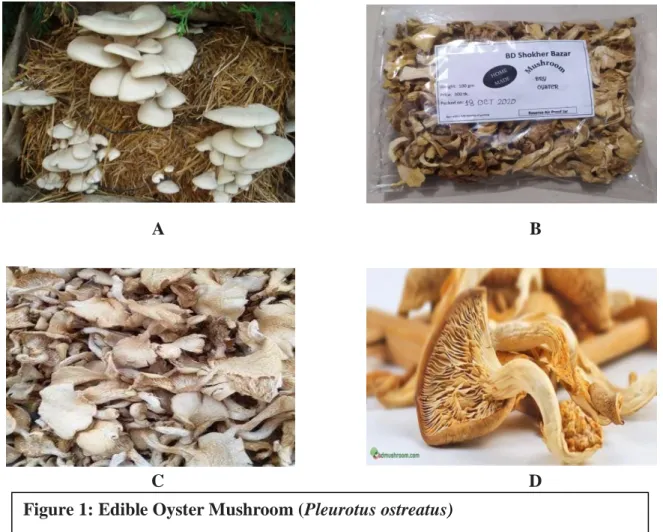
The chemical composition of Mushroom and its structure
Effect of mushrooms on the production and performance of broiler chicken
The extract of Lentinus edodes and Tremella fuciformis mushrooms did not affect weight gain, feed intake, FCR or relative organ weight in broiler chickens compared to the antibiotics given to the birds (Guo et al., 2004).
The role of mushrooms on the body carcass yield and meat quality of broiler chicken
Meat quality may already be affected by manipulation of animal feeding (Kennedy et al. 2005; Assi and King, 2007) or post mortem manipulation of the carcass. The water holding capacity (CWL) of meat and its products is an indicator of good quality and it can protect meat from the harmful effects of chilling and freezing (Guimares et al., 2014). However, fungi can be used in poultry feed without harming food quality (Guimares et al., 2014).
Inclusion of oyster mushrooms at 1.5% in feed has been reported to result in higher carcass weight and dressing percentage compared to a supplemented control group (Abro et al., 2016). In addition, significant variations in meat quality, especially in terms of texture and tenderness, were observed when oyster mushrooms were fed (Camay et al., 2016). Addition of 20 g/kg mushrooms to the diet had no effect on the weight of the carcass or internal organs (Toghyani et al., 2012).
Effect of mushrooms on antioxidant, cholesterol and intestinal microbiota of broiler chicken
Mushroom-fed broilers had significantly higher intestinal villus height and a higher crypt height-to-depth ratio than those fed the control (Shang et al., 2016). Furthermore, broilers fed mushroom-supplemented diets retained more protein from 66.5 to 69.8 g/kg than the control group (Shang et al., 2016). In this study, greater tiller height and height-to-depth ratio were associated with higher nutrient retention.
Giannenas et al., (2010b) investigated the effects of supplementation with Agaricus bisporus on intestinal architecture and microbiology. The authors concluded that mushroom supplementation may have beneficial effects on intestinal health in broilers (Giannenas et al., 2010b). Effect of mushrooms on blood metabolites of broiler chickens. The use of mushrooms in the diet lowers serum cholesterol, which indicates that it is under infectious.
Effect of mushroom on the blood metabolites of broiler chicken The dietary use of mushrooms reduces serum cholesterol indicated that under infectious
According to the research of Fanhani et al. 2016), broilers supplemented with 1.5 and 2 percent Agaricus blazei powder had significantly lower serum total cholesterol levels, while having no effect on serum triglyceride levels.
Effect of mushroom on the survivability of broiler chicken
Effect of mushroom on the bone morphology of broiler chicken Chemical composition of the bone tissue changes greatly depending on species, age,
Effect of mushroom on the profitability of rearing broiler chicken Feed cost or production cost represents the farm ‘s profitability. Higher profitability
Significance of the study
Conclusion
CHAPTER-III
Materials and Methods
Chapter—III
- Statement of the experiment
- Preparation of the experimental shed
- Collection of day-old broiler chicks and experimental design
- Collection of the experimental feed and feedstuffs
- Formulation of test diet
- Feed grinding, mixing and preparing the diets
- Management
- Brooding
- Floor space
- Feeder and drinker space
- Feeding and watering
- Lighting
- Immunization of birds
- Medication
- Sanitation
- Data and sample collection
- Method for the broiler processing
- Recordkeeping
- Mortality
- Body weight
- Feed intake
- Calculation of data .1 Weight gain
- Feed conversion ratio (FCR)
- Mortality and livability
- Dressing percentage
- Sample processing and analyses .1 Feed sample
- Measurement of Metabolizable Energy (ME)
- Serum biochemical parameters and analyses
- Processing bone sample and data collection
- Evaluation of meat yield parameters
- Production cost
- Statistical analyses
The macro feed ingredients (maize, wheat, soybean meal, palm oil and limestone) required for the feed formulation were purchased from the local market of Pahartali Bazar, Chattogram. The composition of the finished diet (Nurish TM) is shown in Table 3 together with the approximate composition and reporting values. Throughout the duration of the trial, all birds had unlimited access to fresh, clean, fresh drinking water.
Vegetable oil (palm) was added to half the required amount by sprinkling on the feed mixture and then thoroughly mixed by hand and shovel. After that, the temperature in the poultry shed was maintained at 25 °C until the end of the experiment. Before starting the experiment, the entire equipment was properly cleaned and disinfected.
Both pre-starter feed sample and test feed sample were collected before delivery to birds to assess the nutritional value of each diet. Abdominal fat content and individual weight of gastrointestinal organs (liver, pancreas, heart, small intestine, proventricular, gizzard) were also recorded to determine the birds' gastrointestinal organ development. After slaughter, the birds were processed by removing feathers, skin, head, shaft, entrails, oil gland, heart, kidneys, liver, lungs and small and large intestine from the carcasses.
Gizzard and proventriculus were separated from the alimentary canal by cutting them in front of the duodenum and behind the last end of esophagus. Average live weight of the broilers was also recorded at the beginning of the experiment and at the end of each weekend. The right tibial bones were collected and boiled in deionized water for 10 minutes to facilitate removal of the attached soft tissue and fat.
After taking the measurements of the bone properties, the samples were sent to the Department of Animal Science and Nutrition to analyze the bone mineral concentration.

Pictorial Presentation of
Activities During Experiment
CHAPTER-IV
Results
Chapter-IV
- Growth responses of broiler chicken fed mushroom diet
- Feed intake
- Live weight gain (LWG)
- The feed conversion ratio (FCR)
- Survivability
- Meat yield parameters of broiler chicken
- Meat quality of broiler chicken fed mushroom diet
- Gastro-intestinal development of broiler
- Serum profile of broiler chicken fed mushroom diet
- Bone morphology of broiler
- Analyses of cost benefit
The results show that FCR was not significantly affected between treatments (P>0.05) as shown below in Table 9. Although there was no change (P>0.05) in FCR values between treatments but it was numerically lower value of FCR (1.57) observed in diets supplemented with T3 compared to the other dietary group. Nutritional treatment had no effect (P>0.05) on the viability of broilers fed the mushroom-supplemented diet (Figure 20).
The results of meat yield parameters shown in Table 10 showed that dietary treatment had no significant effect (P>0.05) on the weights of dressing percentage, breast weight, drum weight, thigh weight, arm weight, fat and neck weight percentage, among other weights. Statistically (P>0.05), birds of the T3 diet group had the highest dressing (percentage) and breast weight, while birds of the T2 diet group had the lowest dressing (percentage) and breast weight, but the highest high on the stick and thighs. Abdominal fat content of broiler was measured in this study to evaluate meat quality based on fat deposition.
The result showed that there was no difference (P>0.05) in the abdominal fat content (%) of broilers between treatments (Figure 3). The relative weight of visceral organs of broilers fed on the mushroom diet is shown in Table 11. The result shows that the proventriculus, gizzard, liver, heart and pancreas weights of the birds were parallel between treatments (P>0.05).
The results of the serum metabolite analysis show that there was no significant effect (P>0.05) between treatments for all serum metabolites except total protein, creatinine and uric acid. The relative length, weight and bone width of broilers fed the supplemented diet (mushrooms) are shown in Table 13. The data showed that the weight of bones of birds was significant (P<0.05) among the treatments.
Values (mean) bearing different superscripts in a row are significantly different at *P<0.05; SEM- standard errors of mean].

CHAPTER-V
Discussion
Chapter-V
- Growth performances of broiler chicken fed mushroom supplemented diet
- Feed Intake
- Feed conversion ratio (FCR)
- Effect of mushroom on the survivability of broiler chicken
- Effect of mushroom on carcass yield, meat cut traits and meat quality of broiler chicken
- Effect of mushroom on the relative weight of gastro-intestinal organs of broiler chicken
- Serum metabolites of broiler chicken fed mushroom diet
- Bone characteristics and mineral concentration (Ca and P) of broiler chicken fed on mushroom diet
- Profitability of broiler chicken fed mushroom diet
A similar result was also reported by previous researchers (Giannenas et al., 2010, Guimaraes et al., 2014). Additional studies have found that mushroom extracts do not limit weight gain (Guo et al., 2004). The immune-enhancing properties of mushrooms can promote broiler survival (Tang et al., 2016).
It can be assumed that mushrooms can act on the body's defense mechanism, as it has been reported that mushrooms could have a positive effect on the immune system of broilers as an antimicrobial and antiviral agent (Jedinak and Silva, 2008, Zhou et al., 2010). ). The humoral immunity of broilers could be improved by adding mushrooms to the diet (Zhou et al., 2010). Our result agrees with the report of a previous researcher who found similar results when broilers were fed mushroom powder supplemented with diet (Toghyani et al., 2012).
Our result contrasts with that of Abro et al., 2016, which revealed that broilers fed oysters (1.5%) had higher carcass weight and higher processing percentage. A likely reason for the increase in abdominal fat on diets may be faster growth leading to an earlier transition from muscle mass to fat (Hossain et al., 2013). Meat quality characteristics are related to meat pH tenderness, color (lightness, redness and yellowness) and water holding capacity (Mahfuz et al., 2019).
The uniform growth of visceral organ development may be due to similarities in body growth (Hossain et al., 2014). Feeding mushroom powder did not change the size of the liver, stomach or pancreas was in close agreement with the insignificant effect of mushroom powder on the weight of internal organs (liver, stomach, heart and pancreas) of broilers fed the experimental diets. (Giannenas et al., 2010). Because it has been reported that mushrooms can increase the level of availability of amino acids (methionine and cysteine) for the synthesis of protein formation in broilers (Shang et al., 2014).
Our result is in agreement with the findings of the previous investigator (Ali et al., 2017), who found similar result in profitability when broiler was raised on mushroom diet.
CHAPTER-VI
Conclusion and Recommendations
Our present study suggests the following recommendations on further study regarding trials on mushroom diets
CHAPTER-VII
Carcass and digestibility patterns fed different levels of mushrooms (Pleurotus ostreatus) in the diet of broilers. Efficacy of different levels of mushrooms (Agaricus bisporus) on intestinal morphology and microflora of broilers. Effect of oyster mushroom waste on the performance, immune responses and intestinal morphology of broilers.
Performance and antioxidant status of broilers supplemented with dried mushrooms (Agaricus bisporus) in their diet. Influence of dietary mushrooms (Agaricus bisporus) on intestinal morphology and microflora composition in broilers. Performance and meat quality of broilers fed a diet supplemented with Agaricus bisporus mushrooms.
Effects of mushrooms and herbal polysaccharides as alternatives to antibiotics on ruminal microbial ecosystem in broilers. Effect of incubation time and dietary level of grain supplements with mycelial fungi on growth and health of broilers. Responses to growth, faecal quality, nutrient digestibility, bone development and meat yield characteristics of broilers fed vegetable or animal proteins.
Evaluation of dried mushroom (Agaricus bisporus) powder as a substitute for antibiotic growth promoter on performance, carcass traits and humoral immune responses in broilers. Dietary incorporation of mushroom (Flammulina velutipes) stem residues in growth performance, antibody response, immune status and serum cholesterol in broiler chickens. Effects of dietary polysaccharides from submerged fermentation concentrate of Hericium spp on performance, gut microflora and cholesterol metabolism in broiler chickens.
Effects of dietary fermentation concentrate of Hericium spp on growth performance, digestibility and intestinal microbiology and morphology in broilers.
Chapter-VIII Appendix
Brief Bio-data of the Author
